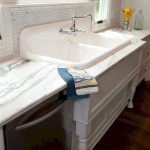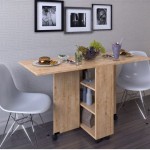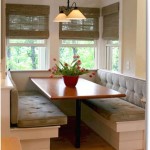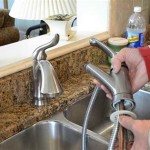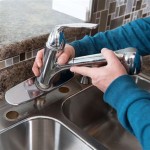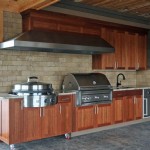How To Pick The Right Knobs for Kitchen Cabinets
Selecting the right knobs for kitchen cabinets represents a detail that significantly impacts the overall aesthetic and functionality of the space. These seemingly small components can contribute to a cohesive design, complement the existing cabinetry, and enhance user experience. Careful consideration should be given to factors such as style, material, size, and placement to ensure a successful outcome.
The process of choosing kitchen cabinet knobs requires a holistic approach, considering the existing design elements and the desired ambiance. Prior to browsing options, a clear understanding of the kitchen's style – whether contemporary, traditional, farmhouse, or eclectic – is crucial. This foundational knowledge will guide the selection process, narrowing down the possibilities and ensuring the chosen knobs align with the overall design theme. Furthermore, the material and finish of the cabinets themselves must be considered to achieve a harmonious and balanced look.
Considering the Kitchen's Overall Style
The architectural style and design elements within the kitchen are paramount considerations when selecting cabinet knobs. A modern kitchen characterized by clean lines and minimalist features necessitates sleek, understated hardware. Conversely, a traditional kitchen with ornate details calls for knobs that reflect a similar level of embellishment. Failing to adequately address the kitchen's overall style may result in a disjointed and visually unappealing aesthetic.
For contemporary kitchens, geometric shapes such as squares, rectangles, or simple circular knobs often work best. Materials like brushed nickel, stainless steel, or matte black complement the sleek and often monochromatic color palettes prevalent in modern designs. The focus should be on clean lines and minimal ornamentation.
Traditional kitchens, on the other hand, provide an opportunity to incorporate more decorative knobs. Options can include antique brass, oil-rubbed bronze, or pewter finishes, often paired with intricate designs or subtle detailing. Antique-inspired shapes, such as floral motifs or Victorian-era patterns, can enhance the traditional aesthetic. Furthermore, glass or ceramic knobs with delicate patterns can add a touch of elegance to traditional cabinetry.
Farmhouse kitchens, which often blend rustic charm with modern functionality, benefit from knobs that reflect this duality. Cup pulls, bin pulls, or simple round knobs in materials like wrought iron, weathered bronze, or distressed wood can complement the farmhouse style. These materials evoke a sense of warmth and authenticity, aligning with the natural and unpretentious character of the farmhouse aesthetic.
Eclectic kitchens, by their very nature, offer the most flexibility in terms of knob selection. The key is to create a cohesive look by carefully curating a mix of styles and finishes. Knobs can be chosen based on personal preference and the specific elements within the kitchen. However, it is crucial to maintain a sense of balance and avoid overwhelming the space with excessive variety. Consider selecting a common element, such as a specific finish or shape, to tie the different knob styles together.
Material and Finish Selection
The material and finish of cabinet knobs significantly impact their durability, aesthetic appeal, and overall contribution to the kitchen's design. Choosing materials that are both visually appealing and capable of withstanding daily use is essential. Several factors influence the ideal material and finish, including the kitchen's style, the existing hardware, and the homeowner's personal preferences.
Common materials for kitchen cabinet knobs include metal (brass, stainless steel, nickel, bronze, pewter), glass, ceramic, wood, and acrylic. Metal knobs offer durability and a wide range of finishes, making them a versatile option for various kitchen styles. Stainless steel and brushed nickel are popular choices for modern kitchens due to their clean, contemporary look and resistance to corrosion. Brass and bronze finishes, particularly antique or oil-rubbed versions, complement traditional and farmhouse kitchens, adding warmth and character.
Glass and ceramic knobs offer a more decorative and elegant option. Glass knobs can be clear, frosted, or colored, providing a subtle yet sophisticated touch. Ceramic knobs often feature intricate designs or hand-painted patterns, making them ideal for adding a unique and personalized element to the kitchen. However, glass and ceramic knobs may be more fragile than metal options and require careful handling.
Wood knobs provide a natural and rustic aesthetic, perfectly suited for farmhouse or transitional kitchens. Wood knobs can be stained, painted, or left unfinished, offering a wide range of design possibilities. However, wood knobs may be more susceptible to moisture damage and require regular maintenance.
Acrylic knobs offer a contemporary and often playful option. Acrylic knobs can be clear, colored, or embedded with decorative elements, providing a visually interesting and modern touch. Acrylic is also a durable and easy-to-clean material, making it a practical choice for busy kitchens.
Consider the existing hardware in the kitchen when selecting knob finishes. Matching the cabinet knobs to the faucet, light fixtures, and appliance handles can create a cohesive and harmonious look. However, contrasting finishes can also be used strategically to add visual interest and depth. For example, pairing matte black knobs with stainless steel appliances can create a striking contrast that enhances the overall design.
Size and Placement Considerations
The size and placement of kitchen cabinet knobs are equally important as style and material. Properly sized knobs are not only aesthetically pleasing but also contribute to the functionality of the cabinets and drawers. Incorrectly sized knobs can be difficult to grip, strain the user's hand, and detract from the overall design.
Knob size should be proportional to the size of the cabinet door or drawer. Smaller knobs are generally suitable for smaller cabinets and drawers, while larger knobs are better suited for larger ones. A good rule of thumb is to choose knobs that are approximately 1 to 1.5 inches in diameter for most standard-sized cabinets. However, this is a general guideline, and it is important to consider the specific dimensions of the cabinets and the overall design aesthetic.
For drawers, the width of the drawer should be considered when determining knob size. Wider drawers benefit from larger knobs or pulls to provide a more substantial grip. Conversely, smaller drawers may look overwhelmed by oversized knobs. Consider the overall balance and visual appeal when making the final selection.
Placement significantly impacts both the functionality and aesthetics of the knobs. Standard placement typically involves centering the knob on the cabinet door or drawer. For cabinet doors, knobs are usually placed in the corner opposite the hinges. For drawers, knobs are typically centered on the drawer front, both horizontally and vertically.
However, these are just standard guidelines, and deviations can be made to suit the specific design aesthetic. For example, knobs can be placed slightly higher or lower on the cabinet door to create a more visually interesting look. Similarly, knobs can be aligned with specific design elements on the cabinet door, such as raised panels or decorative trim.
When replacing existing knobs, the existing holes may dictate the placement of the new knobs. If the new knobs have a different screw pattern, it may be necessary to drill new holes. In such cases, it is important to carefully measure and mark the new hole locations to ensure accurate placement. Consider using a template to ensure consistent placement across all cabinets and drawers.
Before making a final decision, it is recommended to test out different knob sizes and placements. Attach a few sample knobs to the cabinets and drawers using temporary adhesive to get a feel for how they look and function. This hands-on approach can help identify any potential issues and ensure that the chosen knobs are both aesthetically pleasing and ergonomically sound.
Ultimately, selecting the right knobs for kitchen cabinets involves a careful consideration of style, material, size, and placement. Taking the time to thoughtfully evaluate these factors will result in a cohesive and functional kitchen design that enhances both the aesthetic appeal and usability of the space. Considering the kitchen's architecture, existing hardware, and personal tastes ensures that the final selection complements the overall design and contributes to a harmonious and inviting environment.

6 Tips To Choose The Right Cabinet Hardware Signature Home Services

Knobs Pulls How To Choose The Right Kitchen Cabinet Hardware Riverstone Kitchens Calgary Custom Cabinetry Renovations

How To Choose Beautiful Cohesive Hardware For Your Home Ckd Remodeling

How To Choose Between Knobs Or Pulls On Kitchen Cabinets

Choosing The Right Finishes For Cabinet Handles Pulls And Knobs Christopher Scott Cabinetry

Guide To Pick The Right Kitchen Cabinet And Drawer Handles Beautiful Homes
:max_bytes(150000):strip_icc()/easy-steps-to-install-cabinet-hardware-1822225-07-0a31994a76dd450ba41b2ba2ba6e3d59.jpg?strip=all)
How To Select Cabinet Knobs And Pulls

How To Choose Beautiful Cohesive Hardware For Your Home Ckd Remodeling
:max_bytes(150000):strip_icc()/easy-steps-to-install-cabinet-hardware-1822225-hero-01.jpg-0ccfc27a7ed246dfa1c5c09daad8049e.jpg?strip=all)
How To Select Cabinet Knobs And Pulls

Knobs Or Pulls Tips For Choosing Cabinet Hardware Wood Co
Related Posts

